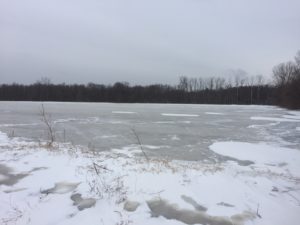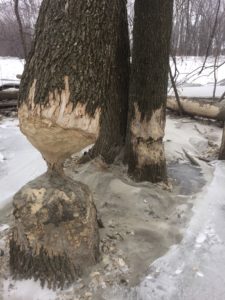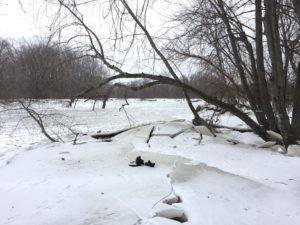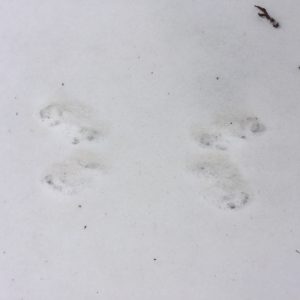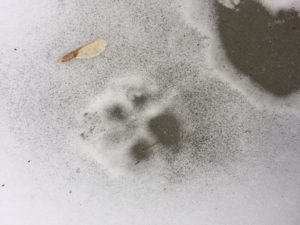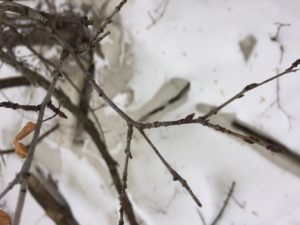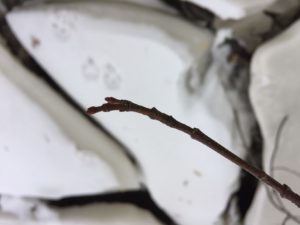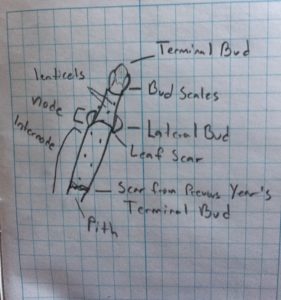It has been two months since I’ve set foot on the intervale to visit my phenology place, and the changes that have occurred are drastic. While it was clear that the geographic location was the same, in some ways the whole area was almost unrecognizable, namely that the entire intervale has donned a thick covering of ice. My guess is that the ice sheet is left over from the flooding that happened in January during a large thaw event. The windblown environment seemed harsh and lifeless, a stark contrast from the fertile agricultural hub that I remembered from the fall.
I was ill prepared to travel over such a large expanse of ice, and what would typically be a fairly short bike ride to my phenology place turned into an hour long, slippery endeavor. On the plus side, my slow rate of travel proved that my initial assessment of the area as being fairly lifeless was wrong. I started to notice tracks in the patches of snow that hadn’t blown away, along with a few other signs of wildlife as well. I saw telltale evidence of beaver in the woods on the way to my place.
Once I arrived to my actual place, it was quite different than the last time. The Winooski has frozen into a stationary slab of icy rubble, with woody debris caught up in the midst. Rather than a sandy shoreline, the ground was covered in thick, broken, upturned slabs of ice. The leaning silver maple that I’ve featured on the blog before was snapped of, the crown embedded and jutting out of ice down below. This visit truly showcased the power that rivers have.
There were some animal tracks at my phenology place. There were tracks that were definitely a dog, judging by the erratic trail and proximity to a popular walking and nordic skiing trail. Another set of smaller, canine prints meandered over the snow, and the trail went under the ice a few times. I couldn’t confirm whether the tracks were a curious small dog or a fox hunting for rodents that took refuge among the cracks in the ice. Tracks from a gray squirrel galloped through my place as well. Even in harsh winter conditions, animals are active.
I’m fairly familiar with the hardwoods in my phenology place. There is a long silver maple stand along the shoreline, and a few box elder trees farther from the shore. My phone died so I was only able to take a few photos of twigs. I also saw another tree that I am still unable to identify. Its alternate branching, slender pointed buds, and lenticels resemble a birch, but it wasn’t a paper or yellow birch, so I’m not really sure what this tree is. It was a small tree with dark gray bark. If anyone has any ideas as to what this tree could be, I’d be happy to hear them!
I enjoyed my most recent visit to my phenology place, and am glad I was able to see all of the unique ice formations that had occurred. Due to the impermanence of winter conditions, by the next time I visit all signs of the Icy spectacle could be gone or covered with snow depending on what the winter brings.

